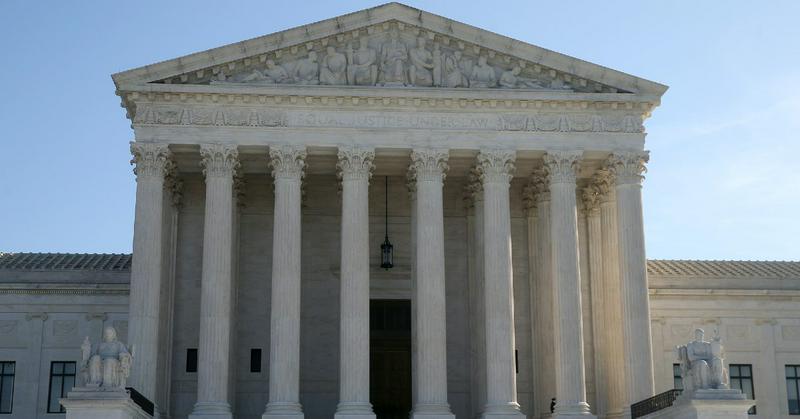When the Supreme Court Decided The Election Through History
By | November 12, 2020

You've got to hand it to the Founding Fathers. When they wrote the U.S. Constitution, they put some clever rules in place to ensure a fair election process in which every vote counts. As part of the checks and balances system that prevents one branch of government from getting too powerful, the judicial branch—specifically, the Supreme Court—can play (and has played) a role in determining the outcome of a contentious presidential election. In fact, the Supreme Court decided elections twice in U.S. history.

The Election Of 1876
After the presidential race of 1876 that pitted Republican Rutherford B. Hayes against Democrat Samuel J. Tilden, the latter had secured the popular vote, but four states—Oregon, Louisiana, Florida, and South Carolina—were too close to call. That was a big deal, because the 19 electoral votes from those states could have swayed the whole election.
The next step, according to the laws of the time, was to let Congress decide the winner. That was an equally sticky situation, however, because in 1876, the Republicans controlled the Senate and the Democrats controlled the House of Representatives. Naturally, they failed to reach a decision, so they formed a bipartisan electoral committee of five senators and five Supreme Court Justices to decide the result of the 1876 election.
For weeks, the committee also remained deadlocked, with all members voting along party lines. Finally, after much discussion and most likely some back room political deals, Supreme Court Justice Joseph Bradley flipped, and the committee awarded the disputed electoral votes to Hayes.

The Election Of 2000
The Supreme Court didn't step in again until 2000, during a presidential election infamous for the chaos it rained down upon the weary public and media. The results were too close to call in several states, particularly New Mexico and Oregon, and the election in Florida was fraught with irregularities. At first, media outlets projected that Democrat Al Gore would take Florida, but as more votes were tallied, Republican George W. Bush started gaining ground, prompting Gore to call Bush to concede the election. In the end, however, only about 600 votes separated the two candidates, triggering an automatic recount in accordance with Florida election laws and Gore to call Bush back at 3:00 A.M. to announce take-backsies.
The electronic recount was completed in a few days, where Bush's lead got even smaller: only 327 votes. Hand recounts were next, which yielded the discovery of serious flaws in the ballot system, introducing all kinds of new vocabulary into the zeitgeist. There were "hanging chads" (paper ballots that had not been completely punched) and "pregnant chads" (ballots that were not punched at all but merely dented), and some voters recorded more than one selection for the same office while others selected none at all. The confusing layout and design of the paper ballots may have even led to voters choosing a third-party candidate by mistake.
When the recounts were completed, the Florida Election Board declared Bush the winner by 537 votes, and a wave of lawsuits descended upon the state. One suit insisted upon a manual recount in two Florida counties, Miami-Dade and Palm Beach, to weed out the pregnant chads and undervotes on those ballots, eroding Bush's lead to just 154 votes. Bush's campaign filed an appeal to the U.S. Supreme Court to halt the manual recount as the deadline for the electoral college vote loomed large in the near distance, and the U.S. Supreme Court ruled in a 5–4 decision to reverse the manual recount order on the grounds that inferring voter intent was unconstitutional. With the recount halted, Bush narrowly secured victory in Florida, giving him the electoral votes he needed to win the presidency.

